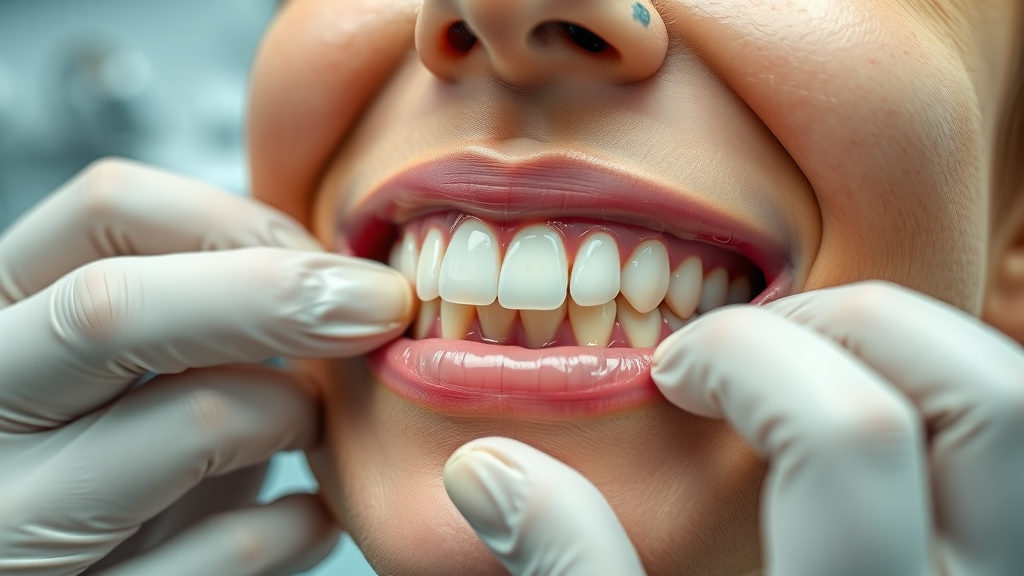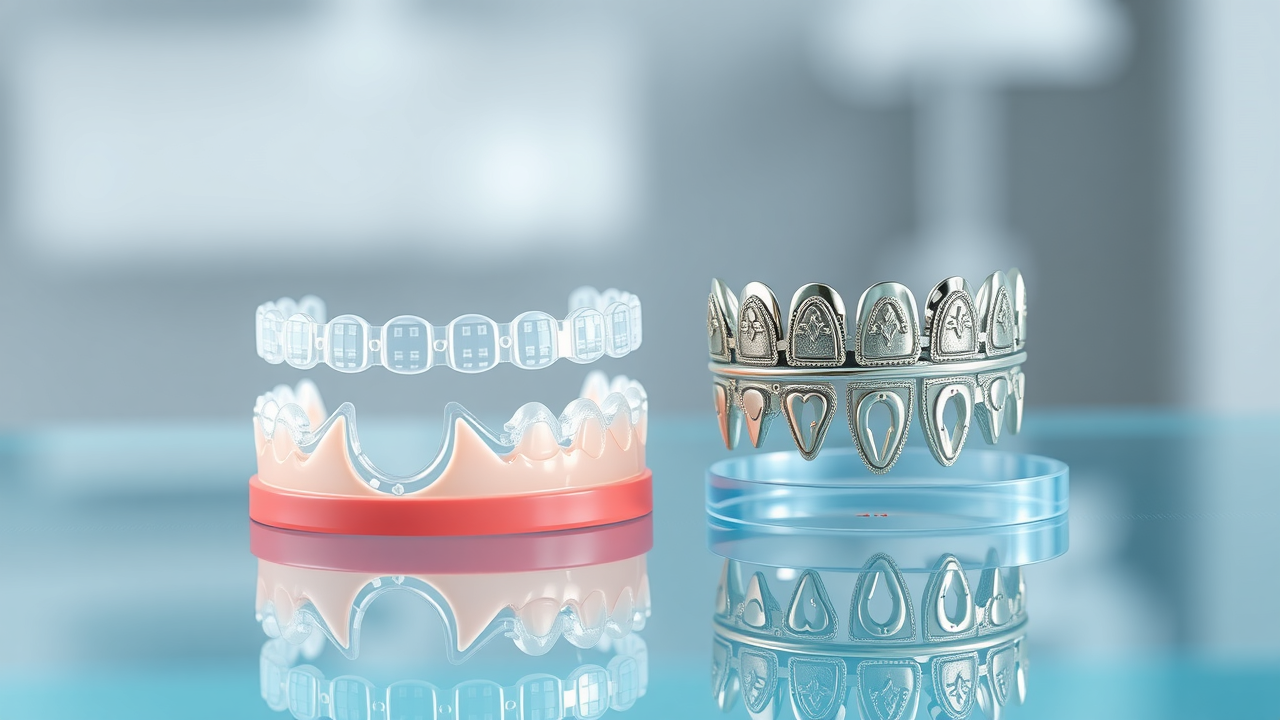Ever wondered why your orthodontist puts tiny blue rings between your teeth before braces go on? You’re not alone. The question, what are spacers, and do they hurt? , pops up for nearly everyone starting orthodontic treatment. If you’re nervous about discomfort, want to understand how spacers work, or just want to make your journey as smooth as possible, you’ve come to the right place. Dive in and get all the facts, firsthand experiences, and practical tips you need—straight from experts and real patients.
Curious About 'What Are Spacers, and Do They Hurt?' Find Out What to Expect
When beginning orthodontic treatment, many patients hear about orthodontic spacers for the first time—and it’s natural to wonder, "What are spacers, and do they hurt?" These tiny devices, often used before placing traditional braces, are designed to gently create space between your back teeth (usually your molars). This extra space is necessary for fitting molar bands or metal rings, which are key for effective orthodontic treatment . Spacers are usually worn for a short period, but the anticipation and stories about discomfort can make this step seem intimidating.
While some patients experience mild pressure or soreness as their teeth adjust, others barely notice the spacers’ presence. The degree of discomfort often depends on how tightly your teeth are positioned, the types of spacers your orthodontist uses, and your individual tolerance level. In the following sections, we’ll explore how spacers work, the differences between rubber band and metal spacers , what real patients say about their experiences, and expert tips to help make the process as comfortable as possible.
-
After reading, you’ll discover:
-
How orthodontic spacers work within orthodontic treatment
-
Types of orthodontic spacer and their specific roles
-
What to expect during and after your spacer appointment
-
Pain levels and real experiences with spacers for braces
-
Comparisons: spacers vs. braces discomfort
-
Practical tips for managing discomfort
-
|
|
|
Comparison of Orthodontic Spacers: Rubber Band vs. Metal Spacers |
|
Feature |
Rubber Band |
Metal Spacer |
|---|---|---|
|
Placement Ease |
Easy |
Moderate |
|
Common Use |
Most cases |
Tight spaces |
|
Discomfort Level |
Mild |
Moderate |
|
Removal |
Simple |
Usually requires tools |

Understanding Orthodontic Spacers: What Are Spacers, and Do They Hurt?
Orthodontic Spacer Basics: The Role in Orthodontic Treatment
Orthodontic spacers , also called separators, are tiny devices placed between your back teeth —specifically the molars—at the start of orthodontic treatment . The main purpose is to create just enough space for molar bands or metal rings to be fitted comfortably. Since most people’s molars sit tightly together, getting these bands in can be impossible without assistance.
Typically, spacers for braces are made from small rubber bands or sometimes metal spacers , and they’re left in for several days up to a week. They gently move the back teeth apart to ensure the orthodontist can easily fit the orthodontic bands . This step is crucial because it sets the foundation for brackets, wires, and everything else needed during traditional braces treatment. Without spacers, forcing bands around your back teeth could be painful or even damage the teeth or gums.
The process of placing spacers is straightforward and usually takes only a few minutes. Most patients feel mild pressure as the spacer is inserted, but it’s not typically painful. As your teeth begin to move to create space, you'll notice sensations ranging from a dull ache to pressure. This is a sign the spacers are doing their job. Some patients describe it as having food stuck between their teeth, others say it's more of a nagging sensation than outright pain.
Orthodontic Spacers Explained: Why Are They Necessary?
The reason orthodontic spacers are so important is simple: they make space between teeth to create room for orthodontic bands . These bands are critical, especially for procedures involving braces , because they anchor brackets and wires for effective tooth alignment . In many cases, back teeth (molars) are packed very tightly together, leaving almost no wiggle room to slide on bands or rings.
If your orthodontist can’t fit a molar band securely, your braces won’t function properly and you won’t get your teeth aligned as needed. Spacers are small rubber bands or metal rings slipped between the molars, and over several days, they gently push the teeth apart. This process is generally painless—think of it as applying slow, constant pressure rather than any forceful movement.
Without spacers, it’s nearly impossible to fit orthodontic bands snugly and safely. Inadequate spacing could cause bands to pinch your gums or cause undue pain. That’s why almost every patient starting braces, especially with metal bands on their back teeth, will need spacers for a short time in their journey.
The Different Types of Spacers for Braces and Their Effects

Rubber Band Orthodontic Spacers: How They Function
Rubber band spacers are the most commonly used type in orthodontic spacer placement. These small rubber circles —about the size of tiny donuts—are gently wedged between the back teeth with a special tool. Once in place, they rest quietly, applying gentle, continuous pressure to open a slight gap for the upcoming molar bands or orthodontic bands .
The beauty of rubber spacers is how unobtrusive they are. Most patients barely notice them at first. However, after a few hours, mild discomfort or a dull ache might set in as teeth start to shift minutely. The pressure is usually mild, typically described as the feeling of having food stuck between the teeth. As days pass, this pressure tends to subside, making rubber bands easy to tolerate.
Since they are flexible and gentle, rubber band spacers are typically used in most cases, unless there is very little space to start with or a patient has unusually tightly packed teeth. They are generally left in for 3–7 days; by that point, there’s usually enough space for molar band placement. Removal is easy: the orthodontist simply slides or lifts them out.
Metal Spacers: When Are Metal Spacers Used in Orthodontic Treatment?
Metal spacers are used in situations where rubber band spacers are ineffective, such as when molars are especially tight. Made from durable stainless steel, these small devices look a bit like tiny springs or rings and are designed to forcefully push apart teeth that won’t budge with soft rubber bands.
Because they are more rigid, metal spacers can deliver stronger, more directed force to open up very snug spaces. While they are highly effective, they tend to cause more discomfort than rubber band versions—patients often report a moderate ache or persistent mild pain, particularly when chewing or touching the affected area. Placement may require a bit more time and skill, and removal involves special orthodontic tools.
Metal spacers are generally reserved for the toughest cases but are vital for certain orthodontic situations, particularly if perfectly aligned teeth or a secure foundation for molar bands is critical. Even though the experience is less comfortable, metal spacers ensure successful orthodontic treatment for everyone, no matter their unique dental arrangement.
Choosing Between Rubber Band and Metal Orthodontic Spacer
Your orthodontist will choose between rubber band spacers and metal spacers based on your teeth’s position and how much space is needed for molar bands . For most patients—with average spacing and not-too-tight teeth— rubber band spacers work well because they are gentle, easy to apply, and cause only mild temporary discomfort.
However, if your back teeth are especially close together or previous attempts at using rubber bands have failed to create the necessary space, metal spacers may be used. They’re a bit less comfortable but get the job done quickly and efficiently, minimizing your overall treatment time.
In some cases, a combination may be used, starting with rubber spacers and moving to metal for stubborn teeth. The important thing is that spacers—no matter the kind—play a crucial role in making your orthodontic treatment effective and as smooth as possible.
Do Orthodontic Spacers Hurt? What Are Spacers, and Do They Hurt in Practice?

Typical Sensations: What Patients Experience With Spacers for Braces
The moment orthodontic spacers are placed, most patients notice immediate pressure—not pain. This sensation usually feels like something is stuck between your teeth , and sometimes a little strange or distracting as the spacers are small rubber or metal rings wedged in the tight space. Some people report mild tooth tenderness, aching, or a throbbing feeling as the teeth adjust.
Over the first few hours, as the teeth begin to shift, there may be a dull soreness, especially when chewing or biting. Some describe it as similar to the sensation after eating tough foods or after having an adjustment at the dentist. The discomfort is generally mild, but in rare cases—especially if tight back teeth are being shifted or metal spacers are used—patients might feel more pronounced sensitivity or aching.
Because orthodontic spacer discomfort usually peaks in the first day or two, most patients find relief after that, as the teeth settle into their new positions. Activities like eating chewy or sticky foods should be avoided, as they can increase tenderness or risk pulling spacers loose.
Duration and Intensity: How Long Do Spacers Hurt?
The pain or pressure from spacers for braces rarely lasts more than a few days. Most often, discomfort peaks within the first 24–48 hours of placement, then fades as teeth adjust. This adjustment period is entirely normal—the teeth are moving to allow room for metal bands or molar rings that anchor the braces. Once the space has formed, the ache typically disappears and spacers become almost unnoticeable.
If you have metal spacers , you might experience a bit more consistent discomfort compared to rubber band spacers , but even then, the pain is usually manageable. It's important to remember that everyone’s pain threshold varies: while some people report hardly noticing the spacers, others may find the first day or two more uncomfortable. However, it is not severe pain, especially when compared to having braces tightened or adjusted.
Any discomfort can generally be managed with over-the-counter pain reliever (such as acetaminophen or ibuprofen) and a diet of soft food —think mashed potatoes, oatmeal, or cold ice cream. Talk to your orthodontist if the pain is sharp, does not subside after several days, or gets worse.
Personal Experiences: Quotes from Orthodontic Patients on Spacer Pain
"The first day felt like I had popcorn stuck between my back teeth, but it got better by the third day. Ice cream helped a lot!" — Jenna, 15
"I hardly noticed the spacers except when I bit into something tough. Soft foods made it much easier to get through the week." — Carlos, 17
"My teeth were really close together, so my ortho used metal spacers. It hurt a bit more, but I was fine after two days. Over-the-counter pain relievers helped!" — Aaliyah, 14
Managing Discomfort: What Are Spacers, and Do They Hurt Less With These Tips?
-
Tips for Reducing Pain from Orthodontic Spacers:
-
Over-the-counter pain relief: Use pain relievers, such as acetaminophen or ibuprofen, as directed to minimize discomfort.
-
Cold foods and beverages: Eating ice cream or sipping cold water can numb the area and reduce soreness.
-
Eating soft foods: Stick to soft foods like yogurt, mashed potatoes, and smoothies while your teeth adjust.
-
Avoiding sticky snacks: Stay away from sticky foods or chewy candies, which can dislodge spacers and cause more irritation.
-
Oral hygiene for spacer comfort: Keep the area clean with gentle brushing and flossing (avoiding the spacer itself) to prevent irritation or infection.
-

Orthodontic Spacers vs. Braces: Which Hurts More?
Comparing Discomfort: Spacers for Braces Versus Initial Braces
It’s a common question: Which hurts more, spacers or braces? The good news is that for most patients, spacers cause less discomfort than getting traditional braces . Spacers for braces exert slow, gentle pressure on your back teeth , leading to a dull ache or pressure that fades after a couple of days.
Once you transition from spacers to full braces—including brackets and wires —the new sensation is often more intense, particularly in the first week. Braces usually cause soreness across all the teeth, make chewing more challenging at first, and require a longer adjustment period, as your mouth adapts to the new hardware.
Most orthodontic patients agree: spacers are the "preview" and braces are the "main event." While both steps may bring some discomfort, the aches from spacers are generally milder, more localized to the space between teeth at the back, and resolve quickly, whereas initial braces can be more widespread and persistent.

Want a professional’s perspective? Watch an orthodontist explain what orthodontic spacers are, why they’re used, and what you can expect in terms of sensation or discomfort—plus see a demonstration of spacer placement and removal. Videos can help patients feel less anxious by showing the process step-by-step.
Since every patient's teeth and pain threshold are different, these videos are a great way to see firsthand what happens in the dental chair, and understand how to prepare for your own appointment.
People Also Ask: How Painful Is Getting Spacers?
Expert Answer: Pain Levels and What to Expect When Getting Orthodontic Spacers
Getting spacers is usually not very painful, but most people feel pressure or an odd sensation when they’re first placed. Mild ache or soreness may develop over the next day, especially when chewing, but the pain is far less than most dental procedures. Any discomfort generally resolves within a few days and can be minimized by eating soft foods and taking pain relievers if needed.
If severe pain develops or the discomfort persists beyond the usual adjustment period, it’s a good idea to check with your orthodontist. However, the majority of patients get through the spacer phase with only minor temporary aches and no emotional stress.
People Also Ask: Which Hurts More, Spacers or Braces?
Expert Answer: Real Patients Weigh In on Spacer and Braces Pain
While spacers can cause mild pain or soreness, most people say getting braces is a bit more uncomfortable, especially in the first week when new pressure is applied across all teeth. Spacers tend to affect just the back teeth and feel more like having food stuck, whereas braces can make your whole mouth feel tender. Fortunately, both feelings fade as your mouth adapts.
Patient feedback consistently shows that spacers are the less painful part of the orthodontic treatment . Within a few days, the discomfort from spacers usually disappears, while braces take a bit longer to get used to.
People Also Ask: Why Is My Spacer Painful?
Expert Answer: Common Causes of Spacer Pain and Solutions
There are a few reasons a spacer might feel more painful than expected. If the space is very tight, or if metal spacers are required instead of rubber bands, the increased force can cause more pronounced aches. Sometimes, food caught around the spacer or minor swelling of the gums can add to discomfort.
Solutions include maintaining excellent oral hygiene, sticking to soft food , and using counter pain reliever as directed. Avoiding sticky foods or chewing directly on spacers can also reduce pain and prevent accidental loss of the spacer.
If your pain feels severe or is accompanied by swelling, redness, or bleeding, contact your orthodontist promptly for guidance. Most issues have simple fixes and quick relief.
Frequently Asked Questions About What Are Spacers, and Do They Hurt?
-
How long do orthodontic spacers stay in?
Orthodontic spacers usually stay in for 3 to 10 days, depending on how quickly enough space is created between your back teeth for molar bands . Your orthodontist will let you know the exact timeframe based on your treatment needs. -
Can you eat normally with spacers for braces?
You may need to temporarily avoid certain foods while wearing spacers. Stick to soft food and avoid anything sticky or chewy that could dislodge them. After a few days, most people forget the spacers are even there. -
Are spacers safe for children and teens?
Yes, orthodontic spacers are very safe for children, teens, and adults. They’re non-invasive, cause only temporary discomfort, and are a normal part of orthodontic treatment for most patients starting braces. -
Can a spacer fall out?
It's possible, especially if you eat sticky foods or floss aggressively. If a spacer falls out, call your orthodontist right away—they may need to replace it to ensure enough space is created for your bands. -
What should I do if my orthodontic spacer causes severe pain?
If pain is severe, constant, or comes with swelling, bleeding, or signs of infection, call your orthodontist immediately. Severe pain is not typical and may need prompt attention or adjustment.

Proper care is essential to keep spacers comfortable and in place. This video covers best practices for cleaning around spacers, what to eat and avoid, and how to recognize any warning signs of trouble while you’re waiting for your next appointment.
Watching these care tips will help you avoid unnecessary pain, keep your orthodontic treatment on track, and give you peace of mind as your teeth prepare for braces.
Key Takeaways: What Are Spacers, and Do They Hurt? Essential Insights for Success in Orthodontic Treatment
-
Orthodontic spacers are a necessary first step in many braces treatment plans, gently creating space for molar bands on the back teeth.
-
Discomfort is mild and temporary, peaking in the first 1–2 days and resolving quickly—much less intense than regular braces adjustments.
-
Metal spacers may hurt slightly more, but both types are designed for your safety and success.
-
Soft foods, cold treats, and over-the-counter pain relievers help minimize aches and keep you comfortable.
-
Contact your orthodontist if you have severe pain or if a spacer falls out to stay on track with your orthodontic treatment.
Start Your Orthodontic Journey: Get the Latest on What Are Spacers, and Do They Hurt?
"Subscribe now to get the latest Grand Strand orthodontic guides, tips, and updates — right to your inbox. No spam. Just smiles."
Orthodontic spacers, also known as separators, are small devices placed between teeth to create space for braces. They are typically worn for a short period before braces are applied. While some discomfort is common, it usually subsides within a few days.
For a comprehensive understanding of orthodontic spacers, including their purpose, types, and what to expect during treatment, consider reading Orthodontic Spacers: What Are the Benefits and Disadvantages? on WebMD. This resource provides detailed information on how spacers function within orthodontic care.
Additionally, Spacers for Braces: Everything You Need to Know from Elate Orthodontics offers practical advice on managing discomfort and caring for spacers during your orthodontic journey.
If you’re serious about understanding and managing the use of orthodontic spacers, these resources will provide you with valuable insights and guidance.
 Add Row
Add Row  Add
Add 




Write A Comment